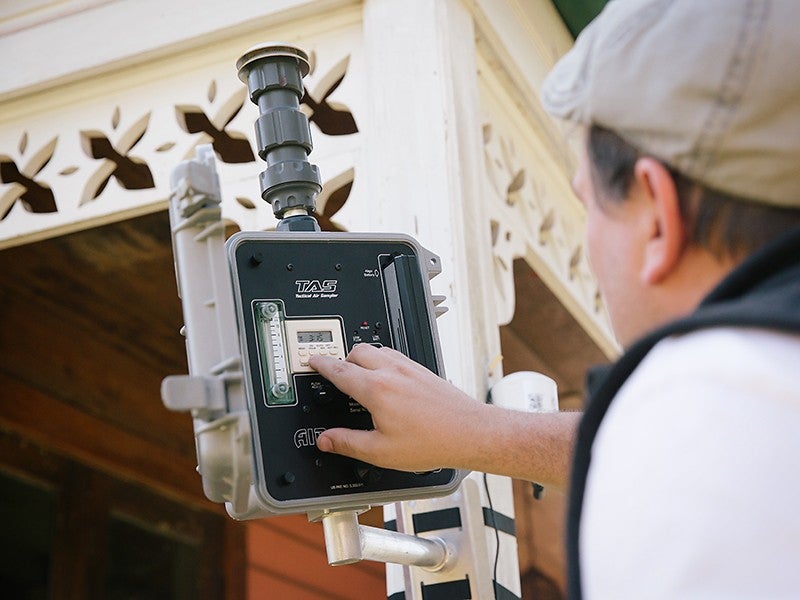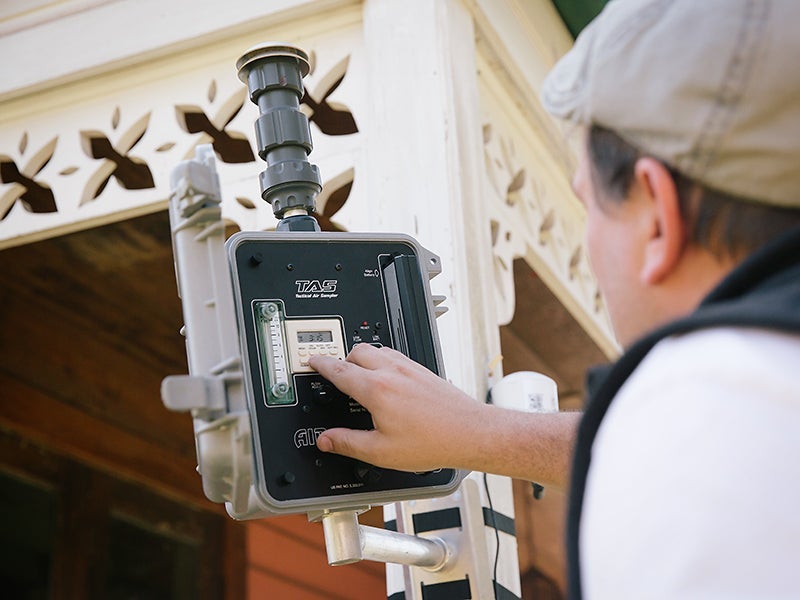
Why Your Air Quality Matters and How You Can Fix It
Why Your Air Quality Matters and How You Can Fix It

Particulate air monitors in use in St. John the Baptist Parish, Louisiana.
Bad air quality is the world’s leading environmental killer. In the United States, air pollution is associated with 100,000 to 200,000 deaths each year.
We can make big improvements on this problem with tighter government standards based on the latest science. A new proposed regulation from the EPA largely fails to do this. You can play a role helping us change that.
You may be familiar with the color-coded Air Quality Index, or AQI. A “green” air day represents healthy air quality, while a “purple” air day means to stay inside if you can. Recent years of climate-driven wildfires have sent toxic wildfire smoke across a wider swathe of the country, introducing many to air quality websites like PurpleAir and AirNow.
But air quality that gets marked “green” may not actually be as safe as advertised.
The color and the associated AQI number reflect where the Environmental Protection Agency sets legal standards for five different air pollutants. When the EPA sets these standards, called “national ambient air quality standards,” it must base them exclusively on what is necessary to protect public health – including the health of those who may be more sensitive to air pollution, people like children, people with heart or lung problems, and older adults — with an adequate margin of safety. As scientists learn more about the dangers of various air pollutants, those standards look more and more inadequate for protecting our health.

This is a big moment
Periodically, the EPA reconsiders its air quality standards and proposes new ones. We are in one of those moments — the agency is updating one of the most important air quality standards for the first time in a decade.
On Jan. 6, the EPA proposed new standards for PM2.5 — a short-hand for particulate matter involving small particles the diameter of 2.5 microns or less. It’s also commonly referred to as soot.
“With PM 2.5, the EPA knows that kills people,” says Seth Johnson, a senior attorney at Earthjustice. “And for PM 2.5, the evidence of disparate impact is really strong. We know it affects people of color — particularly Black people — at least in part due to differences in exposure.” Latino people also experience elevated exposure.
When people breathe in PM2.5, the particulate matter inflames the airways, gets into the bloodstream, and impairs the body’s immune responses. Exposure is linked to increased rates of a dizzying array of complications including heart attacks, strokes, lung cancer, and Alzheimer’s disease.
Unfortunately, the government’s new proposed standards are “a disappointment and a missed opportunity overall,” says Johnson. The current standards are set at an annual level of 12 micrograms per cubic meter (mcg/m3) and daily level of 35 mcg/m3. The EPA proposed to strengthen the annual standard to 9 or 10 mcg/m3 but leave the daily level unchanged.
Though aspects of the EPA’s proposal would somewhat strengthen protections, impacted communities and the nation’s leading health and medical groups have consistently called for stronger standards than what the agency has proposed. EPA’s independent expert science advisors also recommended standards stronger than what the agency has proposed.
“The EPA could save nearly 20,000 lives with stricter protections,” says Johnson. “We urge the EPA to hear communities, not industrial polluters, and strengthen this rule. Overburdened communities have the right to breathe clean air.”

How standards save lives
So, would a better government standard really make any difference to your air? Yes. Here’s how.
When an industrial polluter wants to open a new facility, it must apply for air permits. Those permits will only be given if the operator can show that the added pollution won’t tip the region’s air quality over the legal limits.
And if a region’s current air quality is worse than a newly tightened standard, state governments must draw up and execute plans to curb air pollution so that air quality will meet the updated standard. For PM 2.5, such a plan could involve cutting car traffic by improving public transit or instituting carpool lanes. Or, if there are some industrial facilities like coal plants that do not have modern scrubbing technology, the state can compel them to clean up.
Earthjustice watches to make sure that the governments put forward real plans and follow through on them. If they do not, we take them to court. We are fighting to secure clean air for all people, regardless of who they are and where they live.
Having appropriate standards also ensures that when you are told it’s a “green” air quality day that it is indeed safe for everyone.

How to help
The EPA’s new regulation will trigger a public comment period for 60 days starting when the proposal is formally published in the Federal Register – likely in a few weeks. This will be your chance to lend your voice in support of better protections from air pollution.
The government is legally bound to take note of public comments and can amend proposals based on public feedback.
When the public comment period opens, we will update this article and our website with an easy mechanism for submitting comment.
After setting new PM2.5 standards, the EPA will then take final action on smog, as well as on standards for sulfur oxides, nitrogen oxides, and lead. Stay tuned.